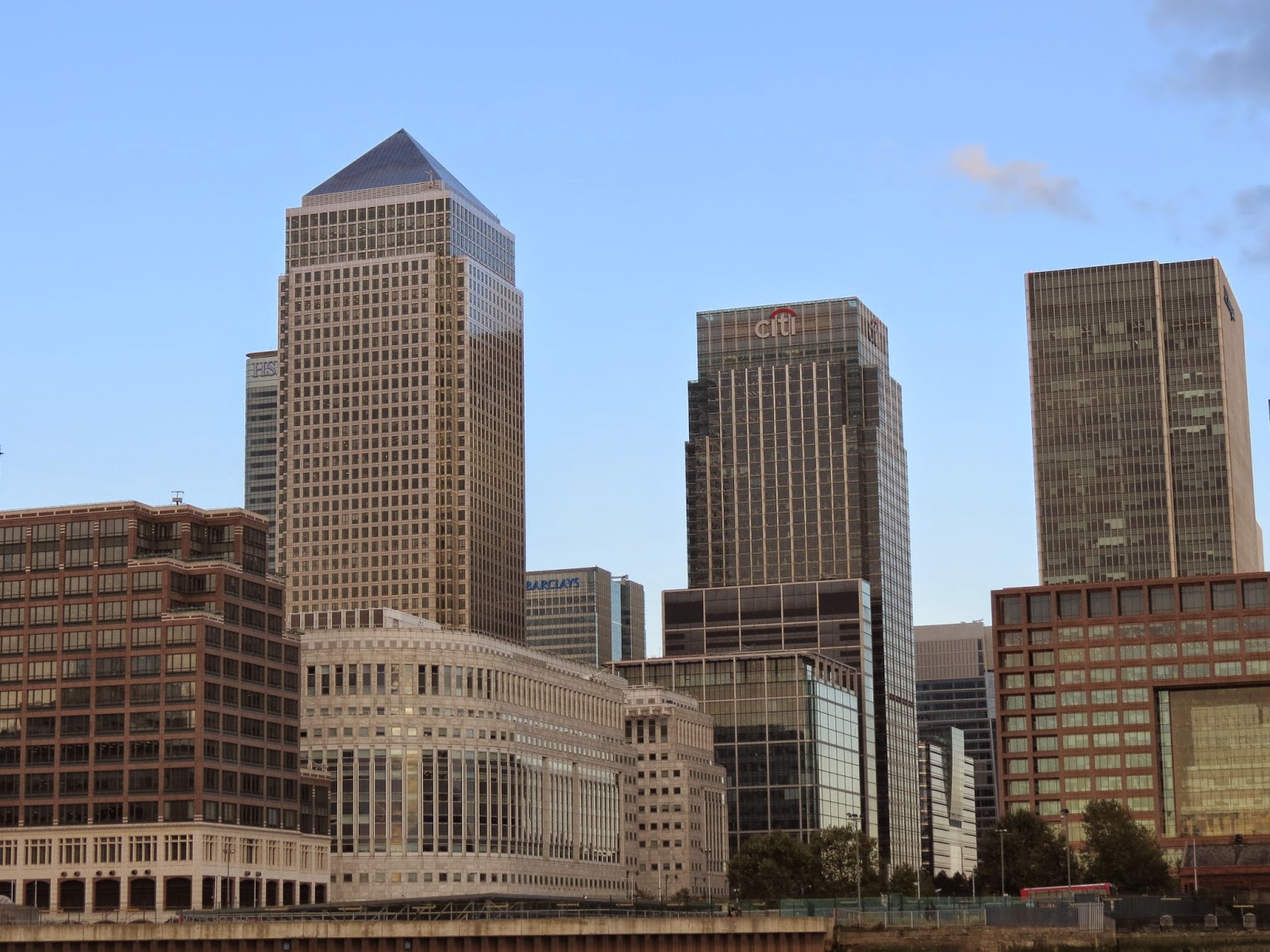....I said that I was returning after my summer break, and here I am returning again! Where does the time go? Thank you for your lovely comments welcoming me back and yes this time I'm definitely back to stay.
A few weeks ago London was hosting an Open House weekend, whereby many famous and otherwise closed buildings were opened up to the public for viewing free of charge. Not wanting to miss this opportunity, we hot footed it into the City early Sunday morning.
Our first port of call was the church of St Botolph without Aldgate, a prominent and significant church in the City and although a church has been on this site for over 1000 years, this was built around 1744 outside the 'ald' gate on the eastern edge of the City. Churches at city gates were often dedicated to Botolph, so travellers could pray on arrival and departure from London's busy port area. London had four such churches - Aldersgate, Bishopsgate and Billingsgate and thus the church is regarded as a sort of English St Christopher.
We had a fascinating talk and wonderful (but very loud) demonstration in the Bell Tower. The church is in possession of a fine peal of eight bells, cast during the eighteenth century at the nearby Whitechapel Bell Foundry (a trip to be made there soon methinks). The tenor bell weighing in at 45 cwt actually caused the tower to sway and rock with the momentum of the peal. Very scary.
A few famous residents in the Parish include Chaucer who lived above the Aldgate gatehouse, Daniel Defoe was married there in 1684. St Isaac Newton lived opposite the church when he was master of the Royal Mint as well as Edmund Spenser the poet who was born there in 1552.
We then attempted to visit the famous Gherkin almost next door but were disappointed to find the queue went around the whole block and would have taken at least an hour to get in so moved on towards the Lloyds Building.
walking past this Old Tea Warehouse -
there's always something to find in these lovely old allies and back streets.
Our son J works in the Lloyds Building and we've been inside a few times, so we were not too disappointed to find it closed. We then walked along towards Billingsgate and the Old Custom House.
In feudal times in order to fight wars, dispense justice and run the country, the King needed money, so tradesmen were charged a fee for importing and exporting goods.
The Thames provided London's access to trade during the middle ages. It is a tidal and navigable river and the city of London developed around the only crossing over it - London Bridge. This was where the ships converged for trading and the reason Custom House was built here - east of the bridge yet within the protection of the city walls.
There has been a Custom House on this site for over 2000 years from when the Romans were here.
We then strolled along the Thames Path towards the Tower of London for our second trip to see the poppies in the moat. A very emotional and spine tingling sight I must say.
It was then back to the car via Pepys Street and the end of a most enjoyable day out
I hope you enjoyed this trip too and I'll be back again in a few days.




















































